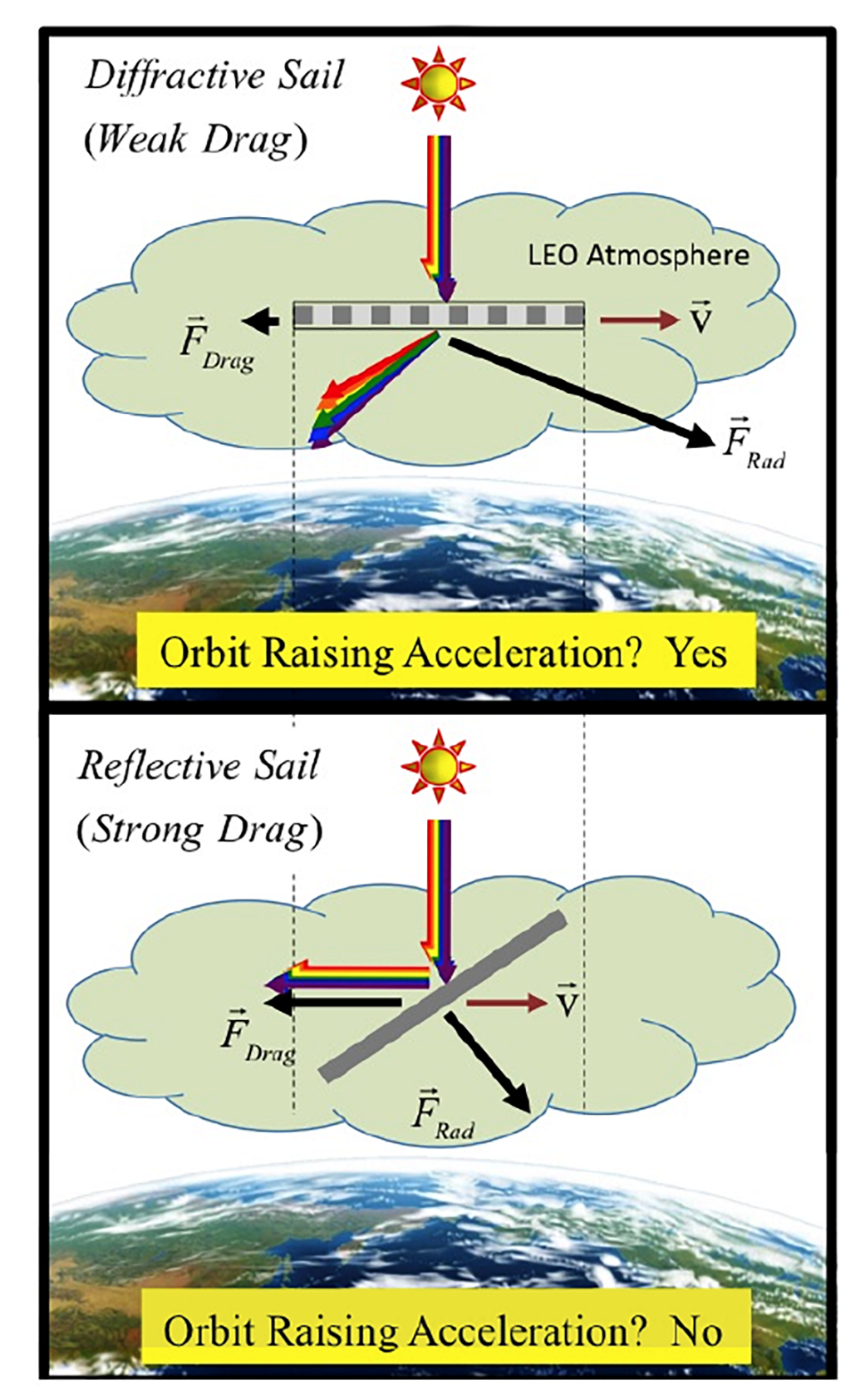Grover Swartzlander
Rochester Institute of Technology
The abundant untapped momentum of solar photons is becoming increasingly attractive as a means to propel spacecraft with an attached solar sail. Decades of theoretical mission studies have examined how microscopically thin films ranging from meters to kilometers in extent may make use of freely available sunlight for near-Earth, interplanetary, and interstellar space travel. In nearly all cases a reflective metal-coated film was the presumed mechanism for photon-to-sail momentum transfer. Here we describe an attractive and innovative alternative that makes use of the recently matured design and fabrication of meta-materials: Diffractive Sails. Advances in the design and fabrication of broadband high-efficiency single diffraction order gratings and active electro-optic control schemes may make diffractive sails superior to reflective sails for orbit raising or lowering, station keeping, and other mission types. The proposed new aerospace architecture could, for example, provide a low cost and efficient means for raising hundreds of LEO CubeSats and other satellites to higher orbits. Such satellites are becoming of great US importance for science, security, and commercial purposes. Experiments, numerical modeling, and roadmap development are proposed. The project will explore the superior radiation pressure force combined with a significant reduction in atmospheric drag in LEO for a diffractive sail compared to a reflective one. The potential to raise (as well as de-orbit or station keep) hundreds of CubeSats from low-cost very-low Earth orbit would be a recognized game changer that would build enthusiasm and advocacy amongst the growing small satellite community of students, entrepreneurs, and aerospace scientists and engineers. Diffractive films provide an innovative approach that will widely affect future solar and laser driven sailing. This proposal represents the first step toward those innovations, raising the TRL from 1 to 3.






























